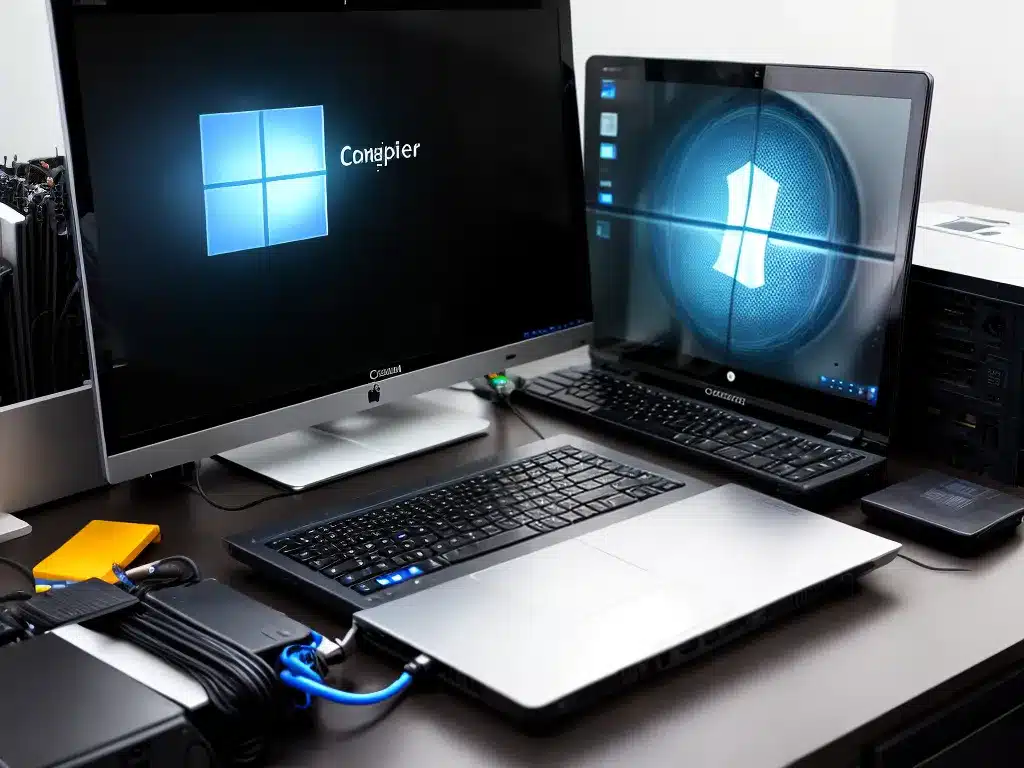
Introduction
Backing up a computer before repairing or upgrading it is one of the most important things you can do to protect your data and ensure a smooth process. Having a recent backup allows you to restore your system if anything goes wrong during the repair or upgrade. It also gives you peace of mind knowing your files are safely stored elsewhere while work is being done on your computer. This article will provide in-depth instructions on how to properly back up your computer before repairs or upgrades.
Reasons to Backup Before Repairs/Upgrades
There are several key reasons why you should always backup your computer before having any repair work or upgrades done:
-
Protect against data loss – If anything goes wrong during the repair or upgrade process, a backup ensures you can restore your files, photos, documents, etc. Hardware failures, accidents, or mistakes can happen, so a backup is crucial.
-
Allow for smooth reinstallation – After replacing hardware components or upgrading operating systems, being able to restore your data from a backup saves the hassle of reinstalling everything manually.
-
Safeguard against malware – Backups give you the ability to roll back to a clean system state in case any malware or viruses are introduced during the repair or upgrade work.
-
Prevent compatibility issues – Upgrading operating systems or hardware can sometimes cause compatibility problems with older apps or drivers. A backup provides insurance against potential issues.
Choosing Backup Software
There are a variety of backup software options available to consumers nowadays. Here are some top solutions to consider:
-
Time Machine – Apple’s built-in backup software for Mac OS X. Easy to use and allows for full system backups.
-
File History – Microsoft’s backup tool included in Windows 8 and 10. Backs up files and folders to another drive.
-
Carbonite – Popular third-party software focused on offsite cloud backup of your files and data.
-
Acronis True Image – Advanced backup software with full disk imaging capabilities and ransomware protection.
I recommend Acronis True Image as it provides both complete system backup features as well as flexible file and folder backup options. The full disk images it creates are an exact replica of your drive, allowing for easy bare metal restores.
Choosing a Backup Destination
Where you backup your computer data to is also an important consideration:
-
External hard drive – Fast and convenient backup target for home users. Should be at least 1.5X larger than used disk space.
-
Network attached storage (NAS) – Allows backups over home network to centralized storage device. Provides redundancy.
-
Cloud storage – Offers reliable offsite backup of your files. Ensure sufficient broadband upload speeds.
-
Removable media – CDs, DVDs, Blu-ray discs, and USB flash drives can store backups. Limited capacity.
For most home users, an external USB 3.0 hard drive with sufficient storage provides a great mix of performance, capacity, and plug-and-play ease of use for backups before computer repairs and upgrades.
Step-by-Step Backup Process
Follow these steps to properly backup your computer before having any repair or upgrade work done:
1. Install backup software
Download, install, and launch your chosen backup program. For this guide, we’ll use Acronis True Image as an example.
2. Connect backup drive
Connect the external USB hard drive or other storage device that you’ll be backing your computer up to. Make sure the backup destination drive has sufficient storage space for all your data.
3. Configure backup settings
Within Acronis True Image, click the backup option and select your external drive as the destination location. Choose “My Disks” to backup the entire system drive.
4. Select files/folders to include
You can also specify any other files, folders, or drives to include in the backup if desired. For repairs/upgrades, it’s best to backup everything.
5. Schedule the backup
For maximum protection, schedule the backup to run automatically before any repair/upgrade work is started.
6. Run the backup
Click the “Backup Now” button to execute the backup process. The initial full backup may take several hours to complete depending on your data size. Make sure your computer stays powered on during this time.
7. Verify successful backup
After the backup finishes, verify that your important files show up within the backup contents under “My Disks” in Acronis. Test restoring a few files to confirm the backup was successful.
8. Secure the backup
Once you’ve verified a good backup, eject/disconnect the external backup drive and store it in a safe place during the repair or upgrade process. Your data is now protected.
Restoring After Repairs/Upgrades
Once any system repairs or hardware/software upgrades are completed, you can restore your data and applications from the backup:
- Reconnect the external backup drive to your computer.
- Launch Acronis True Image and go to the “Recovery” section.
- Select your backup file and choose “Recover whole disks and partitions”.
- Choose the recovery destination disk and click OK to start.
- The restore process will rebuild your entire system drive to match the backup state.
Following these steps will make sure your backup is there when you need it most – before repairing or upgrading your computer. Stay safe!












